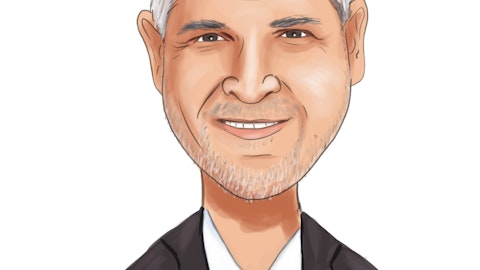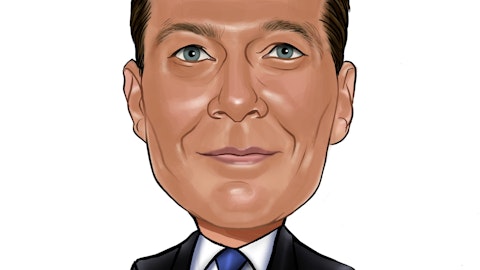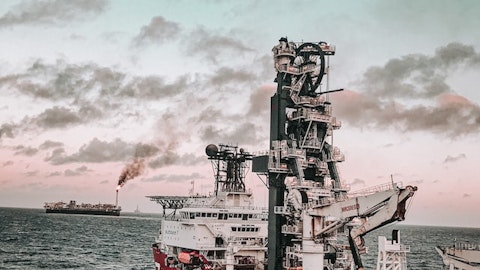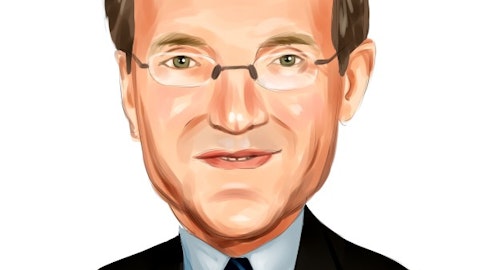Cindy Taylor: Yes. I will tell you, I didn’t isolate on the fourth quarter, but our annual first call consensus was about $91.5 million. And what I do see is that, that would — we had — I mean, let’s face it, we had a weaker third quarter on U.S. land-based activity. Now thankfully, it was more than offset by strength in our international and offshore. The real — I would say, it doesn’t do any good to get the market guidance unless you’ve got better knowledge and information than the market. What I can’t — what I do know is inventories — crude inventories are much lower than they were earlier this year, about 60 million barrels lower. And while nat gas is still above the 5-year average, it’s compressed a lot. The strip is improved.
The question you got to ask yourself is, are we really going to get a U.S. land-based lift in Q4 with the holidays? Or is that going to push into 2024. I would say, based on years of experience in this industry, I would not count on a lift on U.S. land-based activity around Thanksgiving and Christmas. But 2024 looks very good. And again, crude prices, I don’t know where they bottomed in the first half this year, but they were certainly in the $70 range. Now they sit mid-80s and outlook for next year or over $90. So it tells me commodities are improved. Natural gas, I think, lags a bit, but the strip is better. And you’re forecasting about a 20% increase in nat gas exports, both driven by LNG as well as exports to Mexico. So the commodity fundamentals tell me globally, but certainly, U.S. land will benefit 2024.
But I think embedded in fourth quarter is an improvement on U.S. land that I would not necessarily be comfortable with.
Operator: We’ll take our next question from Jim Rollyson with Raymond James.
Jim Rollyson : On the move from Singapore to Batam and just kind of some of the general consolidation activities you’re looking at, maybe frame up how to think about the ultimate benefit. You mentioned the cost which ultimately is paid for by the sale of existing facilities. But just how do we think about that? Is it a margin improvement? Just kind of how to think about why you’re making the moves in terms of what that’s ultimately going to drive from a margin standpoint?
Cindy Taylor: No. Clearly, it is geared around margin improvement. And there’s these kind of independent things, but the real Southeast Asian move is into a lower-cost labor manufacturing environment into Batam. And we will keep a presence, obviously, in Singapore, but a lot of the work on the machining and manufacturing side will be done in Batam. And the goal there is absolutely to, one, increase the top line, our ability to bid has been hampered by higher cost in our Singapore operations, so expand the revenue and improve the margin. That is kind of the subset of Southeast Asia. In doing so, we’ll have facility proceeds, they won’t fully offset the new facility in Batam, but they will certainly help. Separately, we have multiple facilities all over Houston, which I think you know.
And we’ve already been almost idled in one of those facilities. There is a lot of interest in that facility. We’ve had multiple bidders come in. And so we feel comfortable saying we expect to sell that in Q4 or early 2024. Those proceeds, quite frankly, just become corporate proceeds to us. And so the sum of both Singapore and Houston will exceed the new investment that we will make in Batam.



